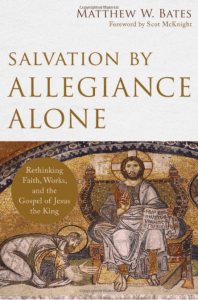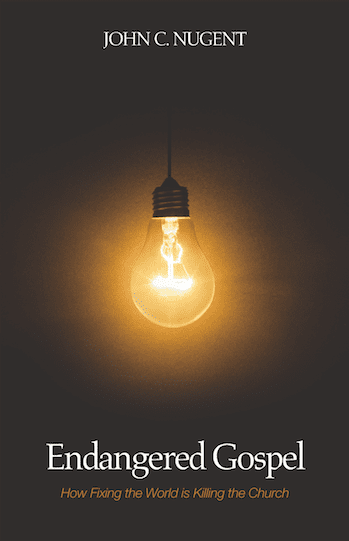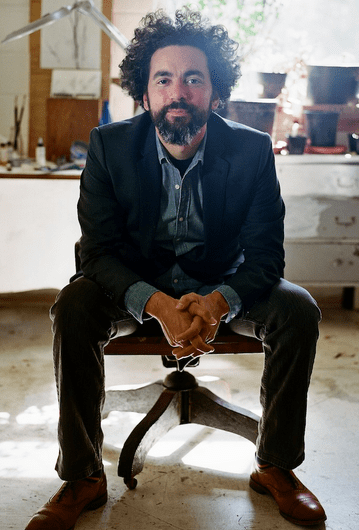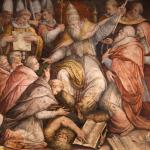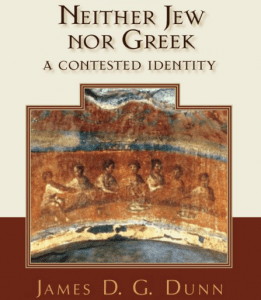 There was a period, perhaps as long as a generation (e.g., 30-40 years), between Jesus’ public ministry of teaching and performing the gospel of the kingdom and the “scribalization” of those sayings and performances. In other words, for a generation what was known about Jesus’ teachings and mighty deeds was passed on orally.
There was a period, perhaps as long as a generation (e.g., 30-40 years), between Jesus’ public ministry of teaching and performing the gospel of the kingdom and the “scribalization” of those sayings and performances. In other words, for a generation what was known about Jesus’ teachings and mighty deeds was passed on orally.
Some think of this oral period as the golden era, pristine and idyllic, but this is not only a false view of history; rather, that oral period overlapped the written period — that is, once the sayings of Jesus began to be written down the oral traditioning process was still in favor to most. For three generations at least the oral was preferred over the written traditions about Jesus. Jimmy Dunn, in his new book Neither Jew Nor Greek: A Contested Identity, examines in the next chapter in our series on his book the scribalization (writing down) of the oral memories about Jesus.
The unique feature of this book is that it looks at what happened in the later phases of the NT and into the early church from the angle of what was before it and what happened to that process in the period under discussion.
Here’s a big point for Jimmy Dunn: the gospel became a (written) Gospel but when it did it did so by continuing the oral tradition process. It was not a fall from oral tradition or a freezing of the tradition for it to become written but an instance of the oral tradition process itself. (I hope that makes sense.)
For Dunn the issue is the nature of the Gospel narratives and, in particular, what one sees when one compares them. But behind those variations is the original oral tradition that had a nature that then shows up in the Gospels themselves. Hence,
For the Synoptic tradition consistently displays the character of the same yet different. The same stories are told, but with details different. The same teachings are presented, but differently worded and grouped. And in about half the cases the differences seem to be inconsequential. This feature, ‘same-yet-inconsequentially-different’, is pre-eminently the character of oral tradition. 211
One of the issues all Gospel scholars face is what it was like when the earliest Christians were “passing on the tradition.” Here is Dunn’s sketch of how it all looked, and what it looked like was a living tradition:
If Jesus proved to be an influential figure, as I assume, then the space was filled by people influenced by him. Their memories would be shared, they would be circulated, they would be interpreted, they would be elaborated, but initially almost entirely in oral forms. The first disciples, apostles and teachers, would tell stories about Jesus in the gatherings of the first believers in Jesus. They would introduce the stories in their own individual styles and from the stories draw conclusions of relevance to their own situations. They would recall and repeat his teachings, grouping them in different combinations, drawing out different lessons for different circumstances, for the benefit of followers whose only access to that tradition was through those responsible for maintaining and preserving the oral tradition. It was not like the rote-learning or memorization of sacred texts — that is not the character of the Synoptic tradition. Rather it was living tradition, narratives which made the disciples’ own life story meaningful, teachings by which they lived their own lives. Elsewhere in the New Testament there is little or no effort made to remember it as Jesus tradition as such. Rather in letters of Paul and James, for example, it has been absorbed into the life-blood of their own ethical teaching. 212
So it was chaos? Not at all, Dunn contends for there is a deep and abiding core to the whole:
But the more important factor is that the Synoptic Gospels provide a remarkably consistent portrayal of the one whose story they tell, and one almost certainly indicative of shared memories which attest the impact made by Jesus. 213
What then of Mark itself? How does it relate to this living tradition, this live memory, this same yet inconsequentially different living memory about Jesus? Did Mark freeze it all, did Mark ruin the process?
On the contrary, there is much to be said for regarding Mark’s Gospel as a natural development of the oral phase. Almost certainly it was written not for an individual to read privately, but for an audience to hear being read aloud. It uses the same tricks and techniques of the oral performance of tradition. It was in effect a written version of an oral recitation of Jesus tradition. 213-214
At this point Dunn enters into a discussion in which he and I have had a public discussion, namely, if Matthew and Luke used Mark, how is Mark to be seen as an “oral traditioning” instead of a literary copying process? I have argued the evidence for “orality” is diminished once one admits the Gospel of Matthew, say, had Mark in front of it. Dunn contends that Matthew and Luke nonetheless continued to use Mark in that typical oral traditioning manner. Over to you, readers:
Even though Matthew and Luke evidently knew and used at least one written source (Mark), they did not merely copy what Mark had written, but gave their own version even of the traditions which Mark conveyed. In other words, the flexibility of the oral transmission period carried over into the written forms of the tradition. 215
He turns to Mark to work with what Mark looks like in the light of this oral traditioning process. He focuses on the following themes that show Mark’s special concerns and Mark’s situation and Mark’s way of traditioning, that is, Mark’s gospel itself:
The gospel as a Gospel, and Dunn gets this so right: it is front, left and center about Jesus. How so? Jesus as Son of God, Jesus as Healer and Exorcist, and Jesus as Messiah, that is Son of Man.
A Manual of discipleship: Jesus then is the teacher of extraordinary authority, and then Dunn summarizes his teaching (237)
Passion climax
Reception of Mark







